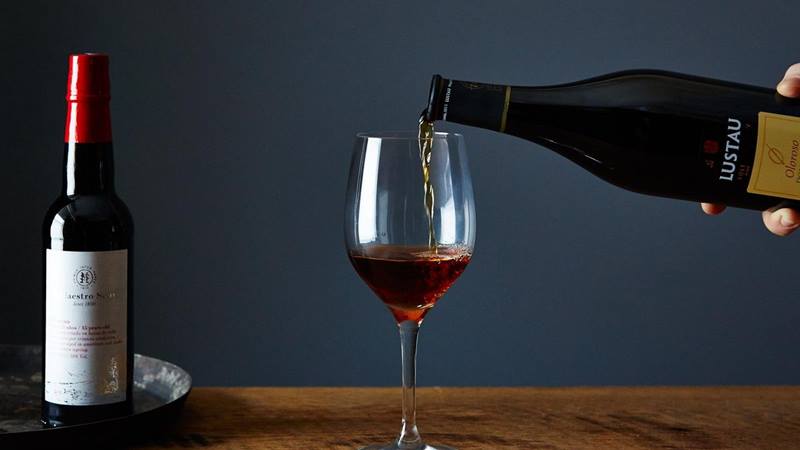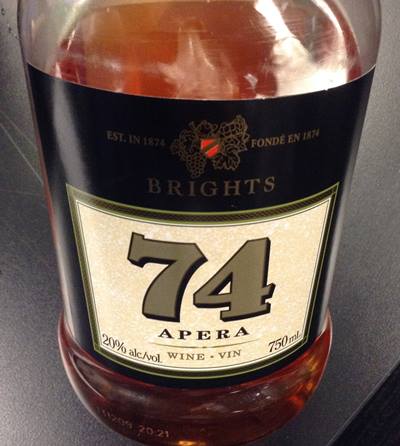Robert Bell's
Wines of Canada
Since 1992
Sherry
Sherry (Spanish: jerez [xeˈɾeθ]) is a fortified wine made from white grapes that are grown near the city of Jerez de la Frontera in Andalusia, Spain.
While Sherry is often thought of as a sweet wine, it was traditionally made dry. It’s only in more recent years that Sherry wines have been sweetened to make the tasty dessert wines that people are more familiar with. This sweet Sherry is commonly known as Cream Sherry.
There are many different types of Sherry, ranging from light table-like wine to darker and heavier styles, but all are made from white grapes, with the Palomino grape being the primary grape used in production.
Most Sherry tastes nutty or like dried fruit, though sweetness levels greatly vary depending on the Sherry type.
Due to the existing Wine and Spirits agreement between Canada and the European Union (CEWSA June 1 2004), starting Dec 31 st 2013 the term (wine name) “Sherry” cannot be used for fortified wines made in Canada any longer. only the Andalusia region Spain could use the name Sherry for their wine. Canada and Australia would use the word “Apera,” which is a play on aperitif.
Jerez was designated a D.O.P. (Denominación de Origen Protegida) in 1933. In Spain, wine labeled with “Sherry” must legally only come from the Sherry Triangle, which is an area of Cádiz located between the three points of Jerez de la Frontera, Sanlúcar de Barrameda, and El Puerto de Santa María.
The Palomino grape is the traditional and most popular grape variety used to produce Sherry, accounting for around 90% of all Sherry production.
This Vitis vinifera grape is native to Spain but is also grown in the Canary Islands, Galicia, South Africa, Australia, California, as well as the Douro region of Portugal. The grape is also known by other names in different places e.g. Listán in France and Fransdruif (White French) in South Africa.
In Spain, the Palomino grape is split into three sub-varieties: Palomino Fino, Palomino Basto, and Palomino de Jerez, with Palomino Fino being the most significant, as this is the sub-variety used to make Sherry.
Palomino is one of the most common grape varieties in Spain, with around 50,000 acres planted. When this grape is fermented, the dry wine produced is low in both acidity and sugar, which isn’t ideal for table wines, but is perfect for Sherry.
Types of Sherry Wine
Fino (fine) – Fino Sherry is the driest and palest form of Sherry. It is aged in barrels under a cap of flor yeast, which protects it from contact with air. The alcohol content is between 15-17% and sugar content must be no more than five grams per liter.
Manzanilla – Manzanilla Sherry is a light style of Fino Sherry from the Sanlúcar de Barrameda area. The alcohol content is between 15-17% and sugar content must be no more than five grams per liter.
Manzanilla Pasada – This is a Manzanilla Sherry that has been further aged or partially oxidized. This gives the Sherry a richer and nuttier taste. Alcohol content is between 15-17% and sugar content must be no more than five grams per liter.
Amontillado – The Amontillado Sherry is first aged under a cap of flor yeast, then it’s exposed to oxygen. This produces a naturally dry Sherry that is darker than Fino, but light than Olorosa (see below). The alcohol content is between 16-17% and sugar content must be no more than five grams per liter.
Oloroso (scented) – This Oloroso Sherry has been aged oxidatively for a longer period than either a Fino or an Amontillado, which makes the wine dark and rich. Oloroso wines have the highest alcohol content of all Sherry types, ranging between 17-22%.
Although Olorosos are naturally dry, you may see them sold as sweet Cream Sherry, which can be a blend of different Sherries, such as Oloroso and Pedro Ximénez (PX).
- Dry Sherry must have an alcohol content of 15-22% and contains five to 45 grams of sugar per liter.
- Pale Cream Sherry must have an alcohol content of 15.5-22% and contains 45-115 grams of sugar per liter.
- Medium Sherry has an alcohol content of 15.5-22% and contains 115-140 grams of sugar per liter.
- Cream Sherry has an alcohol content between 15.5-22% and must have between 115-140 grams of sugar per liter.
Palo Cortado – This Sherry follows the aging process of an Amontillado (between three and four years), but then becomes closer to an Oloroso accidentally, either because the flor dies or is killed by the fortification and filtration.
Jerez Dulce (Sweet Sherries) – These are made from dried Pedro Ximénez (PX) or Moscatel grapes. The sherry is a dark brown or even black in color. Alcohol content is between 15-22% and sugar content must be more than 160 grams per liter for Moscatel and 212 grams per liter for Pedro Ximénez.
Cooking Sherry – This is Sherry that is strictly meant to be added to food only. It is made using a low-quality Sherry wine, then salt and other preservatives are added to make it last for months after it’s opened. The sodium level is around 180mg per serving, and gives dishes a sweeter, nutty taste.
Making Sherry
Like all wine, Sherry is made from the process of crushing, fermenting, and maturing grapes under certified regulations. . However, because of its highly different tasting experience to other wines, winemakers have to do a lot more to give Sherry its iconic taste.
First of all, Sherry wine is always made from white grapes. Palomino, Moscatel, and Pedro Ximenez grape varieties are used; however, the Palomino grape is by far the most common.
Second, through fermentation, winemakers will create a base white wine from the crushed white grapes. This base wine is then fortified, which means extra alcohol is added. From here, the wine is placed in wooden casks to mature.
During the maturation process, winemakers add yeast. This is a common practice in wine production, as the yeast converts sugars into ethanol, thus making the wine alcoholic. However, the yeast in Sherry production is vitally important.
As the yeast converts sugar over time, the yeast cells die and float to the top of the barrel. These dead yeast cells are known as “flor” or “flor yeast.” The layer of flor creates a barrier for the Sherry, preventing it from being exposed to oxygen, or oxidation.
While many types of Sherry are produced under this layer of yeast cells, some types are purposely exposed to oxygen. While oxidation can ruin certain types of wine, it can greatly influence the flavor of others wines for the better, as it can soften tannins and unlock nuanced nutty flavors.
After a short maturation period, the wines are put into a solera for two years. The solera is a complex hierarchal barrel system that matures wine using a large number of casks and fractional blending. The barrels are arranged in tiers known as criaderas, or nurseries.
A fraction of wine is extracted from the oldest wine for bottling (maximum 30%), then is replaced by the same amount of wine from the next oldest, and so on and so forth. The youngest wine already in the solera is then topped up with the new wine from the latest harvest.
This takes place between four and six times a year, depending on the activity of the flor. Once done manually, now it’s more common for the process to be automated, though some traditional bodegas still go through the process by hand.
The solera y criadera method means that Sherry does not have a vintage, but is rather a mix of many vintages, so the age of the wine is often estimated. The minimum average age of a Sherry is two years, but most are older, usually around four years.
In Canada Magnotta Estate Winery is a good producer of Apera. Andrew Peller Limited is a producer under the brand name Andrès

Home | Site map | Robert's Selection | New | Contact Us | ©2022 Robert A Bell


